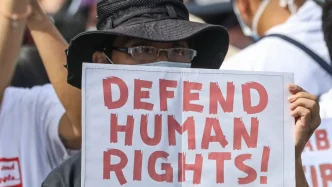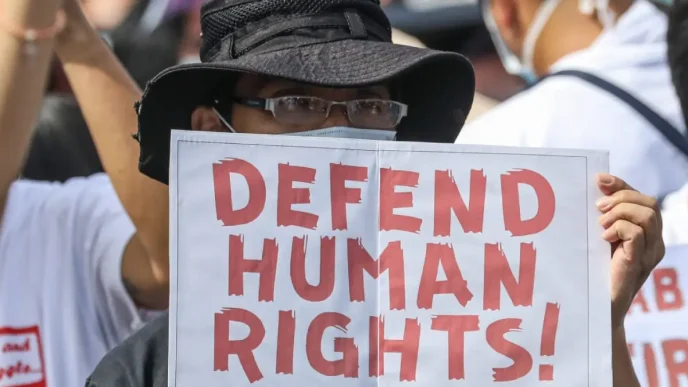The Philippines has asserted its sovereign right to bolster its defence capabilities, rebuffing China’s renewed calls to withdraw the US-supplied Typhon missile system deployed in the country since April last year. In a sharp exchange of words, National Security Council (NSC) Assistant Director General Jonathan Malaya dismissed Beijing’s accusations of “bad faith,” insisting that the missile system serves purely defensive purposes and poses no threat to regional stability. The escalating rhetoric underscores deepening tensions between Manila and Beijing, particularly over disputed territories in the South China Sea, known locally as the West Philippine Sea.
A Defensive Stance Amid Regional Tensions
Malaya, also the NSC spokesperson, issued a robust defence of Manila’s position on Wednesday, arguing that the Philippines has an inherent right to upgrade its military capabilities as it sees fit. “We have not commented previously on [Beijing’s] ever-rising missile inventory, which is the actual threat to regional stability,” he said in a statement to the Philippine Daily Inquirer. He described China’s criticism as “deceptive,” pointing to Beijing’s own rapid expansion of offensive military assets while questioning Manila’s defensive measures.
The Typhon missile system, a mid-range capability developed by the United States, has been a focal point of contention since its deployment during joint military exercises with the US last year. Malaya reiterated that the system is “deployed only for defence purposes and [would] only be used in this manner.” He further emphasised the Philippines’ constitutional commitment to avoiding nuclear weapons and offensive warfare, refuting claims that the system endangers the region.
This latest spat follows a statement from People’s Daily, the official newspaper of the Chinese Communist Party, which accused the Philippines of acting in “bad faith” by allegedly reneging on a promise to withdraw the missile system. The editorial warned that Manila’s actions have “seriously damaged China-Philippines relations” and threatened consequences if the country continues to “fish in troubled waters” by aligning with external powers—a clear reference to the United States.
No Promises Made, Says Manila
Malaya categorically denied any commitment to China regarding the withdrawal of the Typhon system. His comments echo earlier statements by President Ferdinand Marcos Jr, who in January urged Beijing to refrain from meddling in Manila’s military affairs. Marcos went as far as to suggest that the Philippines could return the missile system to the US if China relinquishes its claims in the West Philippine Sea and ceases harassing Filipino vessels and fishermen—an offer laden with diplomatic irony given the entrenched nature of the territorial dispute.
The South China Sea remains a geopolitical flashpoint, with overlapping claims from China, the Philippines, Vietnam, Malaysia, Brunei, and Taiwan. China’s expansive “nine-dash line” claim, which encompasses much of the resource-rich waterway, has been rejected by an international tribunal in 2016—a ruling Beijing refuses to recognise. For the Philippines, the presence of the Typhon system is seen as a critical deterrent against Chinese assertiveness, particularly in areas like the Scarborough Shoal and Second Thomas Shoal, where Filipino fishermen and naval personnel frequently face harassment.
Broader Implications for Regional Stability
The deployment of the Typhon system is emblematic of a broader strategic shift in the Philippines under Marcos’ administration. Since taking office in 2022, Marcos has pivoted towards closer military and diplomatic ties with the United States, reversing the more conciliatory stance of his predecessor, Rodrigo Duterte, towards China. This realignment includes expanded access for US forces under the Enhanced Defense Cooperation Agreement (EDCA) and increased joint military drills, of which the Typhon deployment is a part.
Analysts suggest that Manila’s firm stance on the missile system reflects a growing resolve to counterbalance China’s military presence in the region. “The Philippines is caught between asserting its sovereignty and avoiding direct confrontation with a much larger neighbour,” says Dr. Maria Salazar, a Southeast Asia security expert at the University of the Philippines. “The Typhon system, while defensive in intent, sends a signal that Manila is prepared to stand its ground, albeit with American backing.”
However, this posture risks further straining bilateral relations with China, which remains a major economic partner for the Philippines. Trade between the two nations reached $38.5 billion in 2023, with China accounting for a significant share of Philippine imports. Beijing has previously wielded economic leverage in disputes, such as imposing informal trade restrictions during past South China Sea flare-ups. If tensions escalate, Manila could face economic repercussions alongside diplomatic fallout.
China’s Perspective and Regional Reactions
From Beijing’s vantage point, the Typhon deployment represents an unwelcome expansion of US military influence in its backyard. Chinese state media and officials have repeatedly framed the missile system as a destabilising factor, accusing the Philippines of serving as a proxy for Washington’s strategic interests in containing China. The People’s Daily commentary warned that Manila’s “calculation of wooing external forces for personal gain is doomed to fail,” reflecting Beijing’s broader narrative of resisting perceived encirclement by the US and its allies.
Neighbouring countries in Southeast Asia, many of whom have their own disputes with China in the South China Sea, are watching the situation closely. Vietnam, for instance, has expressed cautious support for the Philippines’ right to self-defence while advocating for dialogue to prevent escalation. Indonesia and Malaysia, meanwhile, have remained largely silent, wary of being drawn into a conflict that could disrupt regional cooperation under the Association of Southeast Asian Nations (ASEAN).
Domestic Support and Criticism
Within the Philippines, the government’s stance on the Typhon system enjoys broad public support, particularly among those who view China’s actions in the West Philippine Sea as a direct threat to national sovereignty. Fishermen in coastal communities, who have borne the brunt of Chinese harassment, have welcomed any measure that strengthens Manila’s position. “We just want to fish in peace,” said Juan dela Cruz, a fisherman from Zambales province, near the disputed Scarborough Shoal. “If this missile helps protect us, then it’s a good thing.”
However, some domestic critics caution against over-reliance on US military support, warning that it could compromise the Philippines’ autonomy in foreign policy. Progressive groups and leftist lawmakers have accused the Marcos administration of deepening military ties with Washington at the expense of pursuing independent diplomatic solutions with China. “We’re becoming a pawn in a superpower rivalry,” argued Representative Carlos Zarate of the Bayan Muna party. “This missile system might protect us today, but it ties our hands tomorrow.”
Looking Ahead: A Delicate Balancing Act
As tensions simmer, the Philippines faces a delicate balancing act between asserting its territorial rights and managing relations with a powerful neighbour. The Typhon missile system, while a symbol of Manila’s resolve, is unlikely to alter the fundamental dynamics of the South China Sea dispute. China’s military and economic dominance in the region ensures that any resolution will require sustained diplomacy alongside defence preparedness.
For now, Malaya’s comments signal that the Philippines is not backing down. “The country has the right to boost its defence capabilities in opportunities which it deems appropriate,” he affirmed. Whether this stance will lead to further escalation or pave the way for dialogue remains to be seen. What is clear, however, is that the South China Sea will continue to be a theatre of contention, with the Typhon system as its latest flashpoint.
In the broader context of Southeast Asian geopolitics, the Philippines’ decision to stand firm could inspire other nations to push back against Chinese assertiveness, potentially reshaping regional alliances. Yet, the risk of miscalculation looms large. If either side oversteps—be it through military posturing or economic retaliation—the consequences could ripple far beyond the shores of the West Philippine Sea.
As President Marcos navigates this high-stakes arena, his administration’s choices will not only define the Philippines’ place in the region but also test the limits of sovereignty in an era of competing superpowers. For now, the Typhon missile stands as both a shield and a lightning rod, encapsulating the fraught path ahead.














